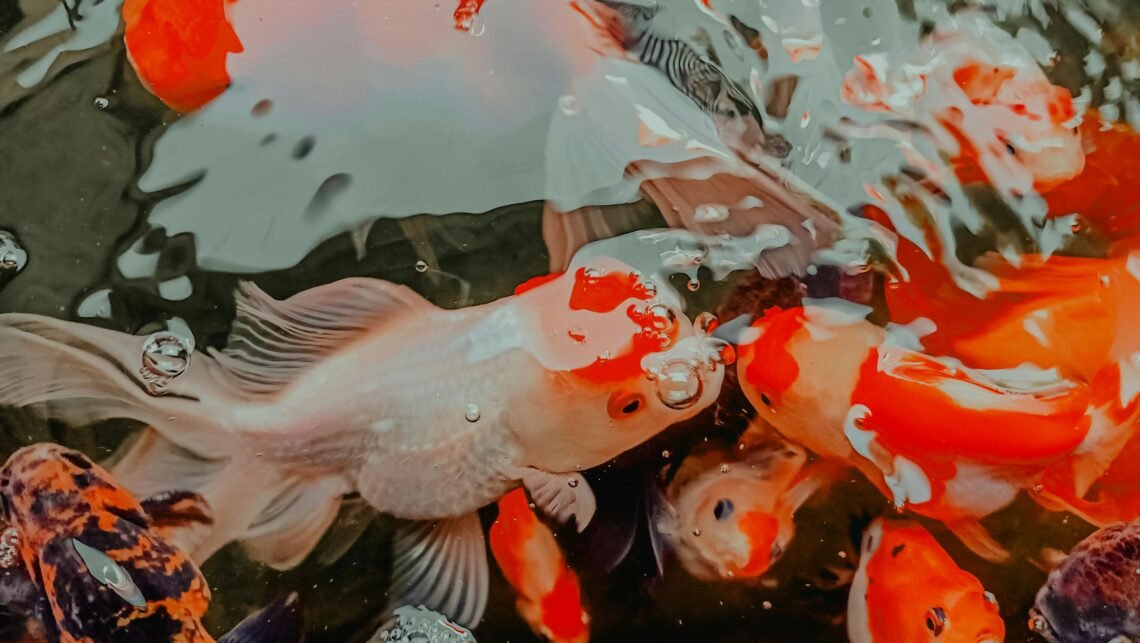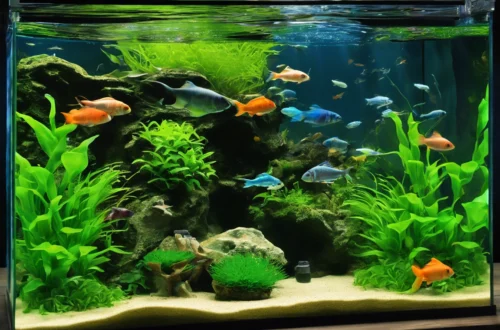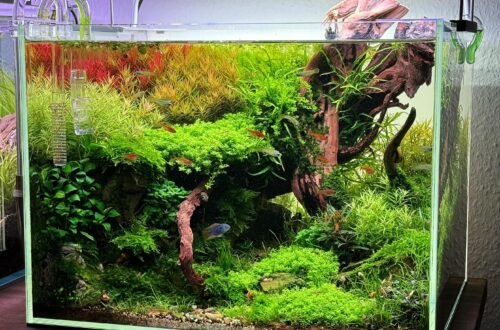Feeding aquarium fish might seem like a simple task, but it’s one of the most crucial aspects of fish keeping. When I first got into the hobby, I had no idea how much feeding practices could affect the health and happiness of my fish. I’ve made my share of mistakes, and through trial and error, I’ve learned what works best. In this guide, I’ll share my personal experiences and best practices for feeding your aquarium fish, so you can avoid some of the pitfalls I encountered.
Understanding Your Fish’s Dietary Needs
When I started my first tank, I just grabbed a tub of generic fish flakes, thinking all fish ate the same thing. Boy, was I wrong! Each species has its unique dietary requirements, and feeding them correctly starts with understanding what those are.
Researching Fish Species
One of the first things I learned is the importance of researching your fish species. For example, my goldfish had different needs compared to my bettas. Goldfish are messy eaters with voracious appetites, while bettas are more selective. Knowing what your fish naturally eat in the wild can guide you in selecting the right food.
Herbivores, Carnivores, and Omnivores
Fish can be broadly classified into herbivores, carnivores, and omnivores. I had a mix of all three in my community tank, which made feeding a bit of a juggling act. My plecos loved algae wafers (herbivores), my cichlids went crazy for protein-rich pellets (carnivores), and the guppies ate a bit of everything (omnivores). Understanding these categories helped me tailor my feeding approach to keep everyone happy.
Recognizing Natural Feeding Habits
One mistake I made early on was not paying attention to the natural feeding habits of my fish. For instance, bottom dwellers like catfish need food that sinks, while surface feeders like guppies prefer flakes that float. I had to adjust my feeding strategy and the types of food I offered to align with these habits. It made a huge difference in how well my fish ate and their overall health.
Choosing the Right Food Types
The pet store can be overwhelming with all the different fish foods available. From flakes to pellets to live food, it took some experimenting to figure out what worked best for my fish.
Commercial Fish Food Options
Flakes, pellets, and wafers are the staples of many aquariums. For my community tank, I used a mix of all three. Flakes were great for my surface feeders, while pellets worked well for mid-level swimmers. I used sinking wafers for the bottom feeders. I found that alternating between these foods kept my fish engaged and ensured they were getting a balanced diet.
Live, Frozen, and Freeze-Dried Foods
Introducing live, frozen, and freeze-dried foods was a game-changer for me. My carnivores, especially the bettas, loved bloodworms and brine shrimp. I learned to rotate these with their regular diet to provide variety and enrichment. However, these types of foods can be messy, so I had to be diligent with tank maintenance to avoid water quality issues.
Homemade Fish Food
I eventually tried making homemade fish food, blending fresh veggies and seafood into a gelatin base. Not only did my fish love it, but I also had peace of mind knowing exactly what was in their food. It was a bit time-consuming, but seeing my fish thrive made it worth the effort.
Establishing a Feeding Routine
Consistency is key when it comes to feeding fish. I learned that sticking to a regular schedule helped keep my fish stress-free and healthy.
Frequency of Feeding
How often you feed your fish depends on the species, but a good rule of thumb is to feed small amounts 1-2 times a day. I fed my fish once in the morning and once in the evening, which seemed to suit most of them well. Some fish, like bettas, do well with a once-a-day feeding, while fry (baby fish) need more frequent, smaller meals.
Portion Control and Avoiding Overfeeding
Overfeeding was one of my biggest challenges. It’s tempting to keep adding food when your fish seem hungry, but this can lead to uneaten food, poor water quality, and health problems like bloating. I learned to feed just enough that my fish could eat in 2-3 minutes. If there was leftover food, I cut back the next feeding.
Observing Your Fish’s Behavior
One of the best ways to ensure your feeding routine is working is by observing your fish. Their behavior can tell you a lot about their health and happiness.
Monitoring Eating Habits
I made it a habit to watch my fish during feeding times. If they were actively eating and seemed energetic, I knew things were on track. But if they started refusing food or seemed sluggish, it was a sign something was off. This helped me catch issues early, like when I had a sick goldfish that stopped eating.
Adjusting Feeding Based on Behavior
Sometimes, I needed to adjust my feeding strategy based on my fish’s behavior. For example, during spawning, some of my fish would eat less, so I’d reduce feeding. Other times, if I noticed aggression during feeding, I’d spread the food out more to ensure everyone got their share.
Dealing with Picky Eaters
Not all fish are enthusiastic eaters, and I’ve had my share of picky ones. Bettas, for instance, can be notoriously fussy.
Identifying Picky Eating Patterns
Picky eaters often ignore new foods or prefer one type exclusively. My betta would only eat bloodworms and snub pellets. I had to get creative to ensure he got a balanced diet.
Strategies to Encourage Eating
One trick I used was soaking pellets in garlic juice—a natural appetite stimulant. It worked wonders, and soon enough, my picky eaters were gobbling up their food. Another method was mixing new foods with their favorites to gradually introduce variety.
Special Considerations for Feeding
Feeding isn’t one-size-fits-all, and there are times when adjustments are necessary, like when dealing with fry or sick fish.
Feeding Fry and Juvenile Fish
When I had baby guppies, I learned that fry have special dietary needs. They require tiny, frequent feedings of high-protein food.
I used crushed flakes and baby brine shrimp, feeding small amounts several times a day to support their rapid growth.
Feeding During Illness or Stress
If your fish are stressed or ill, their appetite can decline. During these times, I found it helpful to offer easily digestible foods like live or frozen options. Sometimes, adding a bit of garlic juice would entice them to eat when they were feeling off.
Cleaning Up After Feeding
Keeping the tank clean after feeding is just as important as the feeding itself. Uneaten food can quickly foul the water, leading to algae growth and other problems.
Managing Food Waste
I learned to be proactive with cleaning up after feeding times. Using a small net, I’d scoop out any uneaten food within 10 minutes. This simple habit kept my tank cleaner and helped maintain better water quality.
Preventing Algae Growth
Overfeeding can also contribute to algae growth, which is a battle I’ve fought many times. By controlling portions and cleaning up after meals, I managed to keep algae at bay and my tank looking pristine.
Learning from Mistakes
I’ve made plenty of feeding mistakes along the way, but each one was a learning experience that helped me become a better fish keeper.
Common Feeding Mistakes I Made
From overfeeding to feeding the wrong foods, I’ve done it all. One of the worst was when I accidentally fed my herbivorous fish too much protein, leading to digestive issues. It was a tough lesson, but it taught me the importance of species-specific diets.
Lessons Learned and Tips to Avoid Pitfalls
Through these experiences, I’ve learned to always research first, start with small portions, and be observant. Keeping a feeding log helped me track what worked and what didn’t, making it easier to adjust as needed.
Feeding your aquarium fish is both an art and a science, and getting it right takes time and patience. By understanding your fish’s needs, choosing the right foods, and observing their behavior, you can create a feeding routine that supports their health and happiness. Don’t be afraid to experiment and learn from your mistakes—after all, that’s how I became a more confident and successful fish keeper.
FAQs
How often should I feed my aquarium fish?
Most fish do well with 1-2 feedings per day, offering just enough food that they can consume in 2-3 minutes. Adjust based on species and individual needs.
What are the signs of overfeeding in fish?
Overfeeding can lead to uneaten food, cloudy water, increased algae growth, and health issues like bloating. Monitor portion sizes and reduce if you notice these signs.
Can I feed my fish human food?
Some human foods like vegetables (peas, spinach) can be fed to fish, but avoid anything processed or seasoned. Always research before adding new foods to their diet.
How do I handle a fish that won’t eat?
If a fish won’t eat, try offering a variety of foods, soaking food in garlic juice, or adjusting the feeding environment. Monitor for signs of illness if refusal persists.
What is the best food for different types of fish?
Herbivores prefer algae wafers and veggies, carnivores like protein-rich foods (live or frozen), and omnivores need a mix. Tailor your feeding to the specific needs of each species in your tank.






